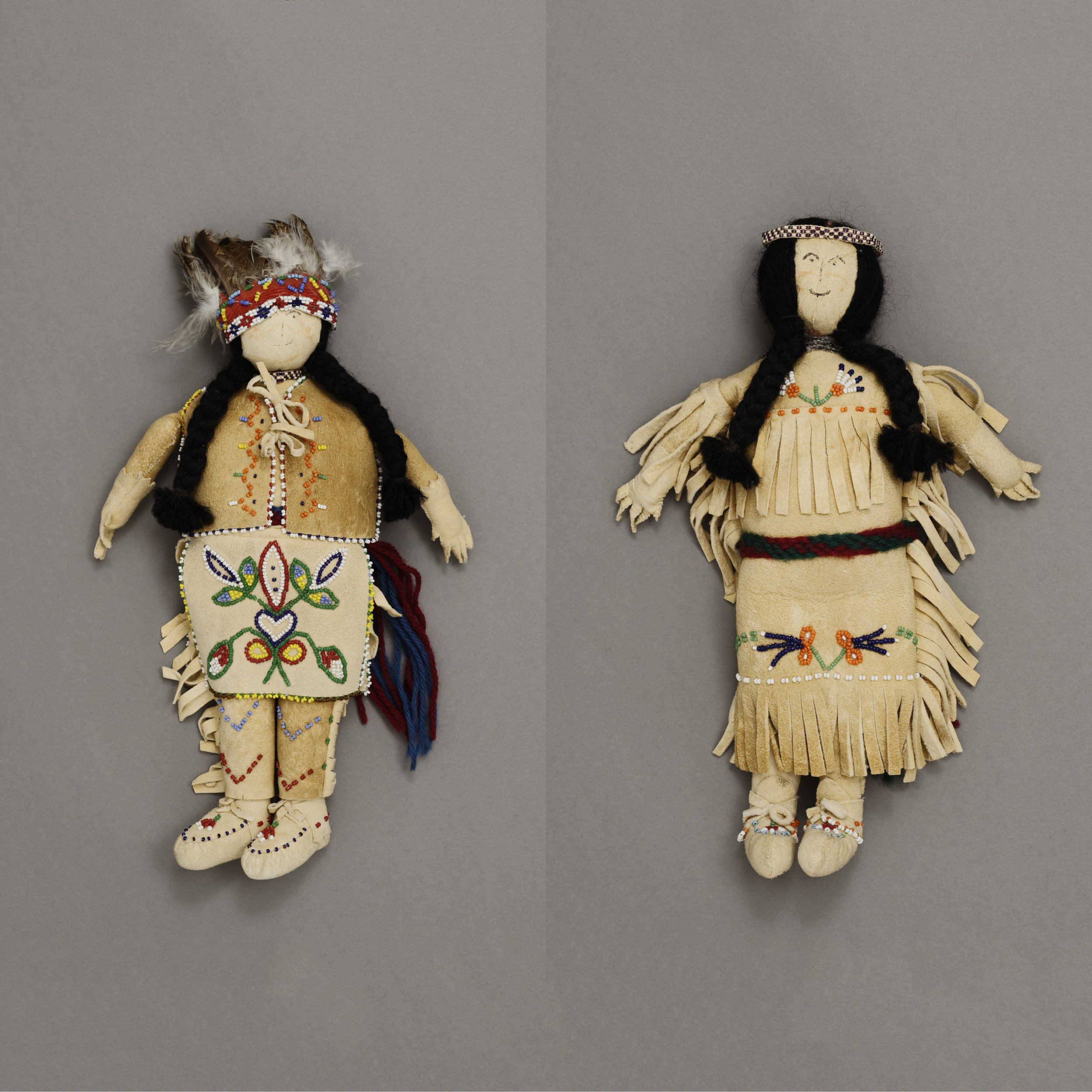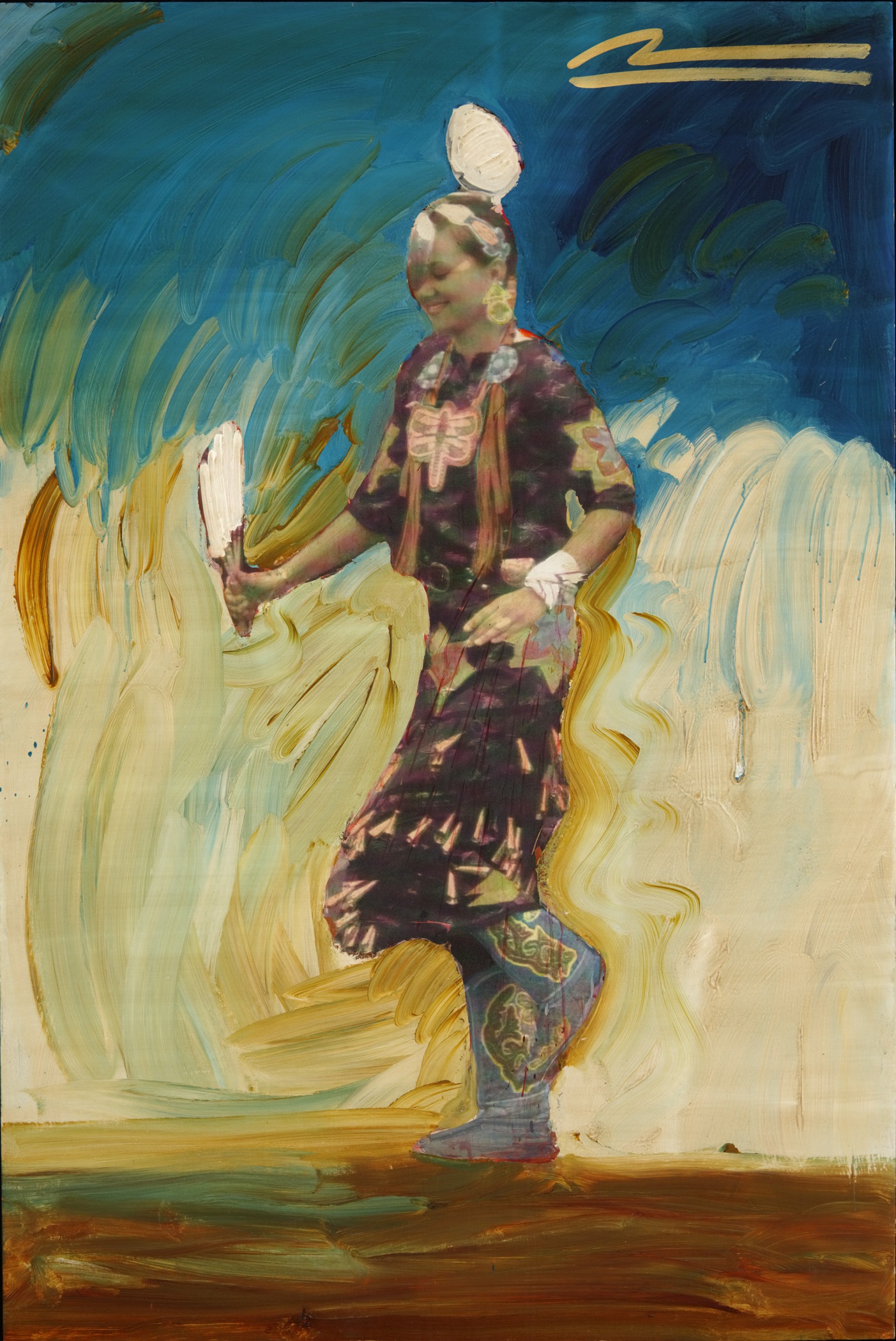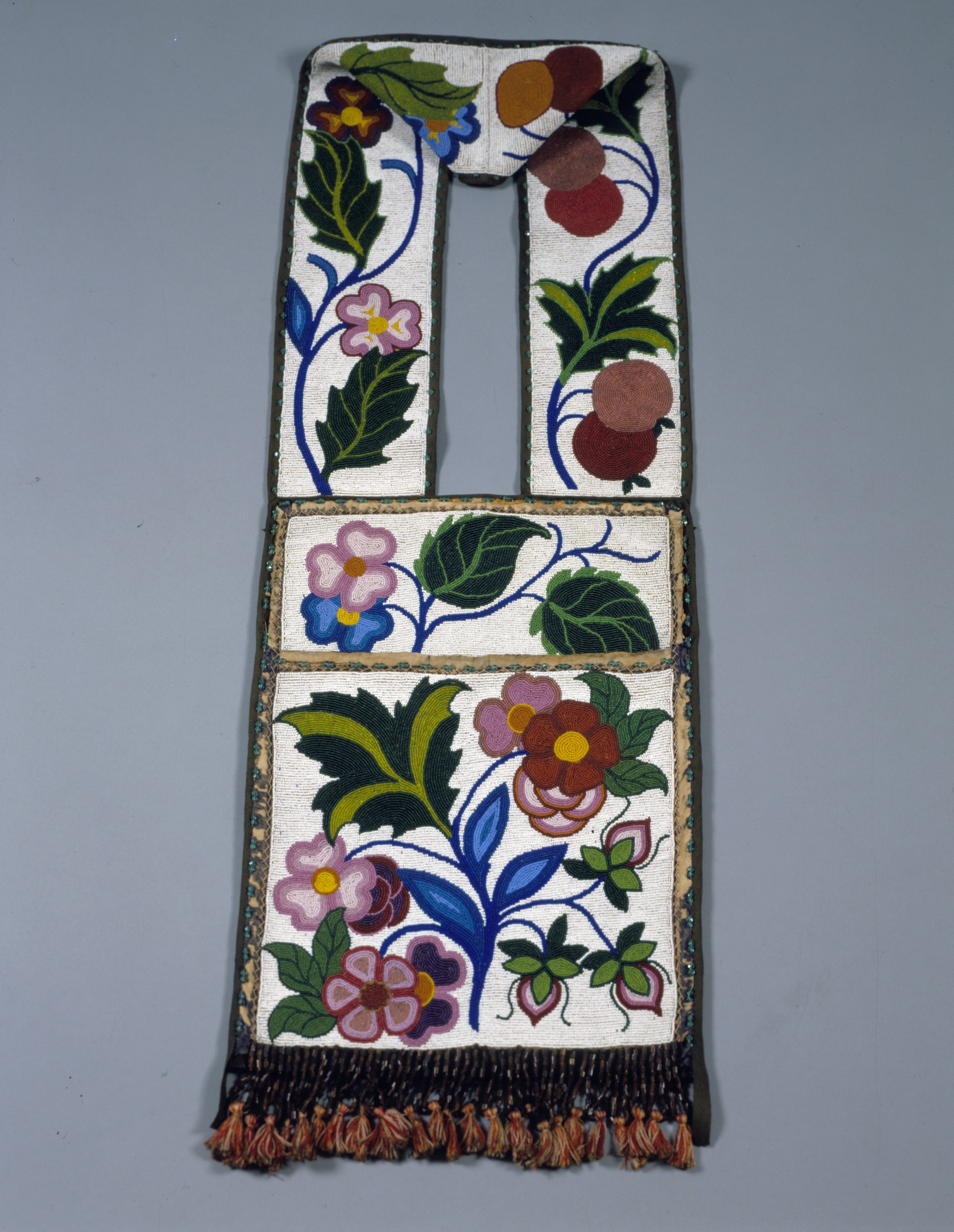Anishinaabe (Chippewa/Ojibwa)
Dolls representing an Ojibwa man and an Ojibwa woman
- About 1954
- Buckskin, glass trade beads, yarn, feathers, and cloth
- 14 9/16 × 6 11/16 × 2 9/16 in.
Hood Museum of Art, Dartmouth College: The Wellington Indian Doll Collection, Gift of Barbara Wellington Wells; 987.35.26732-3
visibilityLook & DiscussThe same unknown artist created these two dolls about 60 years ago. Like many Indian dolls made for sale, they wear ceremonial clothing. The doll maker who created them drew upon the same skills Anishinaabe women have always used to make traditional clothing for their families. Each doll is about a foot tall.
Explore the Object
The male doll is wearing the historic dress of an Anishinaabe man. His feathered headdress indicates that he is a leader or a chief. He also wears an embroidered and beaded vest, fringed breechcloth and leggings, and beaded moccasins, all constructed out of deerskin.
The female doll is wearing the historic dress of an Anishinaabe woman: a fringed, beaded, and embroidered dress also made of deerskin, with moccasins and a beaded headband. The embroidery exhibits the Anishinaabe preference for floral designs for both men’s and women’s clothing.
Both dolls have cloth bodies. Their hair and belts are made of yarn.
learn more
Watch Seminole scholar Leah Bowe discuss the clothing and regalia of several Woodlands dolls.
In this video, novelist Louise Erdrich (Ojibwa), Dartmouth Class of 1976, speaks about her childhood memories playing with dolls from the Wellington Collection, now in the Hood Museum of Art's collection.
For an excellent teacher resource on Native American dolls, access the Fall 2004 issue of Smithsonian in Your Classroom by the The National Museum of the American Indian.




